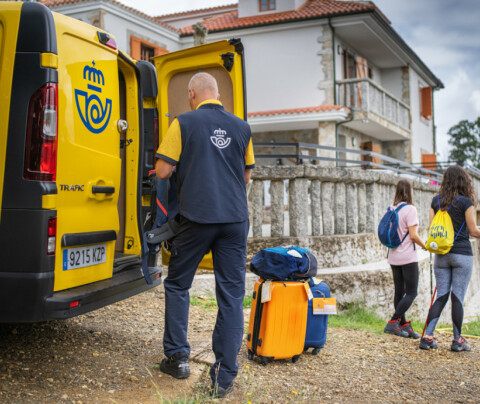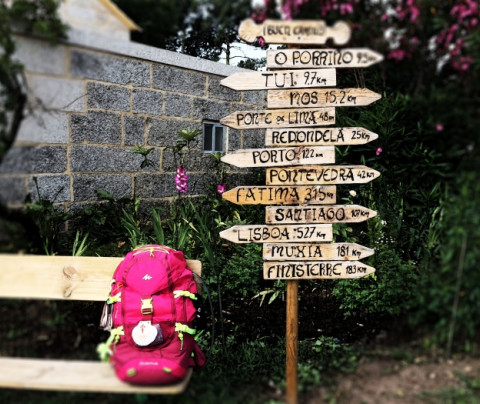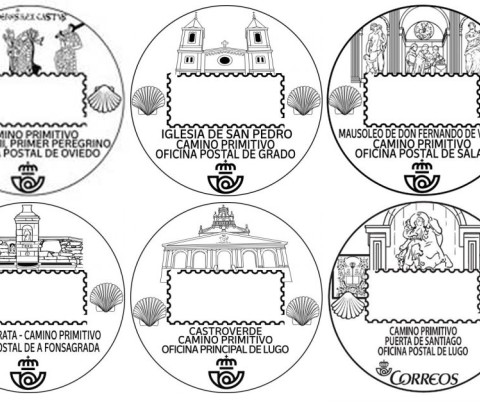The Way with Correos
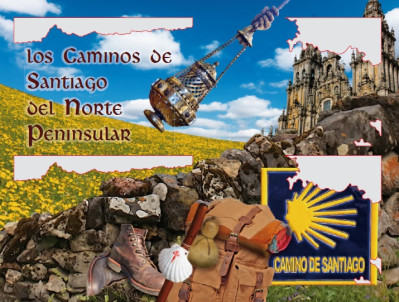
The Camino del Norte (The Northern Way) can be made on foot, by bike or on horseback … and now by also using stamps. Correos has created a stamp booklet with images of the most significant places on El Camino de Santiago (The Way of St. James) to pay tribute to this Jacobean route, which was one of the first to be used by European pilgrims to reach Santiago de Compostela, and which was added to UNESCO’s World Heritage List in 2015.
Los Caminos de Santiago del Norte Peninsular (The Way of St. James through The Northern Coast of the Iberian Peninsula) is an original stamp collection that pays homage in the form of a booklet cut to form the outline of the Iberian Peninsula's northern coast. It is made up of eight stamps detailing the highlights of the Way as it passes through the Basque Country, Cantabria, Asturias and Galicia. Specifically, the Monastery of Zenarruza in Bizkaia, the Collegiate Church of Santa Juliana of Santillana del Mar, the Conventín of Valdediós in Villaviciosa and the facade of the Catholic Kings' Hostel of Santiago de Compostela. These are four gems of the Camino’s heritage, with the Cantrabrian Coast as the background, a representation of the charms that pilgrims may find on this age-old Route.
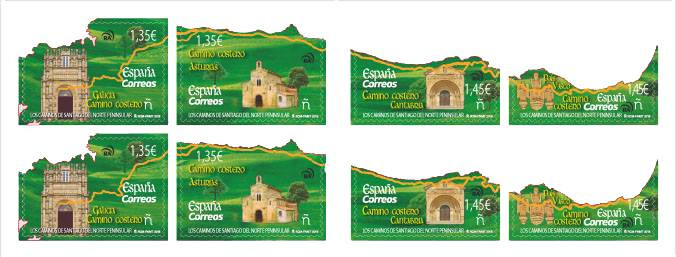
Collegiate Church of Santa Juliana of Santillana del Mar
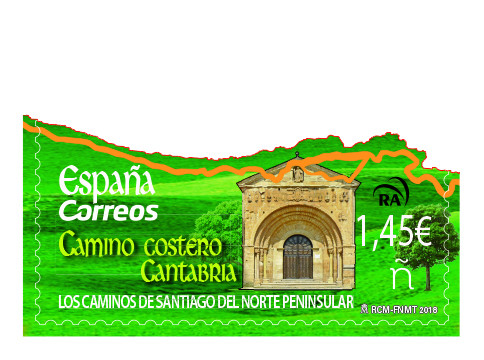
The first stamp of this series was presented today at the Colegiata de Santa Juliana de Santillana del Mar (Cantabria). The stamp is dedicated specifically to this religious monument that dates back from the 11th - 12th centuries, and is the most important example of Romanesque art in the region, with particular emphasis on its courtyard.
As the Camino del Norte winds its way through Cantabria, it offers astonishing cliffs, idyllic valleys and charming fishing villages. However, the stamp focuses on one of the sites with the greatest Jacobean tradition: Santillana del Mar. For centuries, this medieval village, declared a National Artistic Historic Site, has been welcoming pilgrims from all over Europe to worship the resting place of the Apostle Santiago, and its Colegiata was used as both hostel and hospital.
Church of San Salvador de Valdedios
Tomorrow on Friday the 13th of April, Asturias will host the presentation of the stamp dedicated to the Iglesia de San Salvador de Valdediós (Church of San Salvador de Valdedios), located next to the town of Villaviciosa, in Asturias. Commonly known as the “Conventín”, this is the last great architectural work of the pre-Romanesque art of Asturias that has been passed down through the ages. It was declared a National Monument in 1913.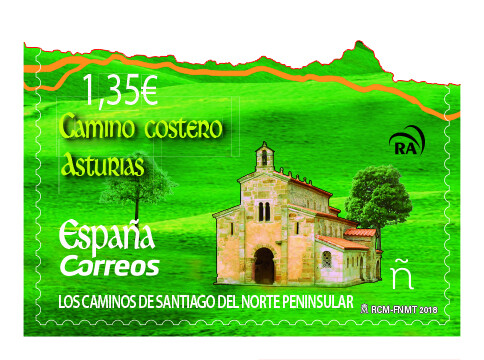
Today it remains an essential stop for pilgrims, who can stay at the hostel of the nearby Monasterio de Santa María (Monastery of Santa Maria). History, art and spirituality come together in this beautiful landscape of high moorlands and mountains, which for centuries have made it a unique paradise where pilgrims are welcome to rest and recuperate before resuming on the Camino.
Monastery of Zenarruza in Bizkaia
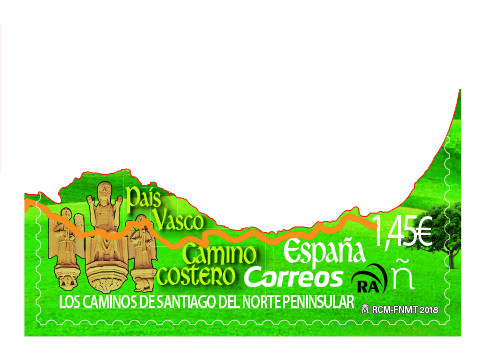
The Camino del Norte departs from Irún and continues through the intricate Basque coast and its green valleys. In addition to its two main cities -San Sebastián and Bilbao-, the Camino del Norte crosses both fishing villages, such as Zarautz or Deba, and inland villages, such as Markina, Guernika or Lezama.
The part of the Los Caminos de Santiago del Norte Peninsular booklet that corresponds to the Basque Country is dedicated to the Monasterio de Zenarruza (Monastery of Zenarruza) in Bizkaia. It was an important enclave of this route to Santiago de Compostela and its influence stretched far beyond the region, especially at the end of the 14th century with the growing number of pilgrimages to Santiago. To provide hospitality to pilgrims at the hostel is still a priority today.
Catholic Kings' Hostel of Santiago de Compostela
All routes lead to Santiago de Compostela. And this tribute to the northern route is no exception. The stamp dedicated to Santiago shows the Galician coast as a background with the facade of the Hostal de los Reyes Católicos (Catholic Kings' Hostel of Santiago de Compostela), designed by the Catholic Kings.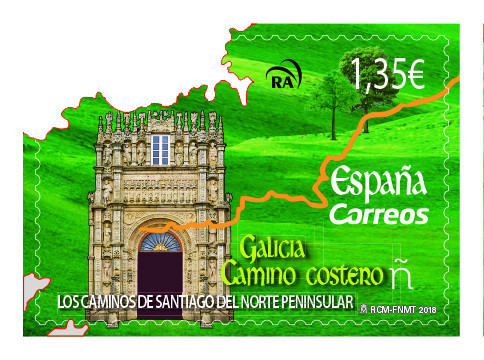
Now a national parador, it is one of the main monuments that pilgrims see when arriving at the finish line, flanking one side of the Plaza del Obradoiro (Obradoiro Square). When the Royal Hospital became a hostel, the Church reserved the right to offer breakfast, lunch and dinner for free at the hostel’s restaurant to the first ten pilgrims to enter its doors with stamps to certify their completion of the Camino (the Compostela). Today, it continues to honour this tradition of hospitality by offering a breakfast free of charge to the first ten pilgrims to pass.
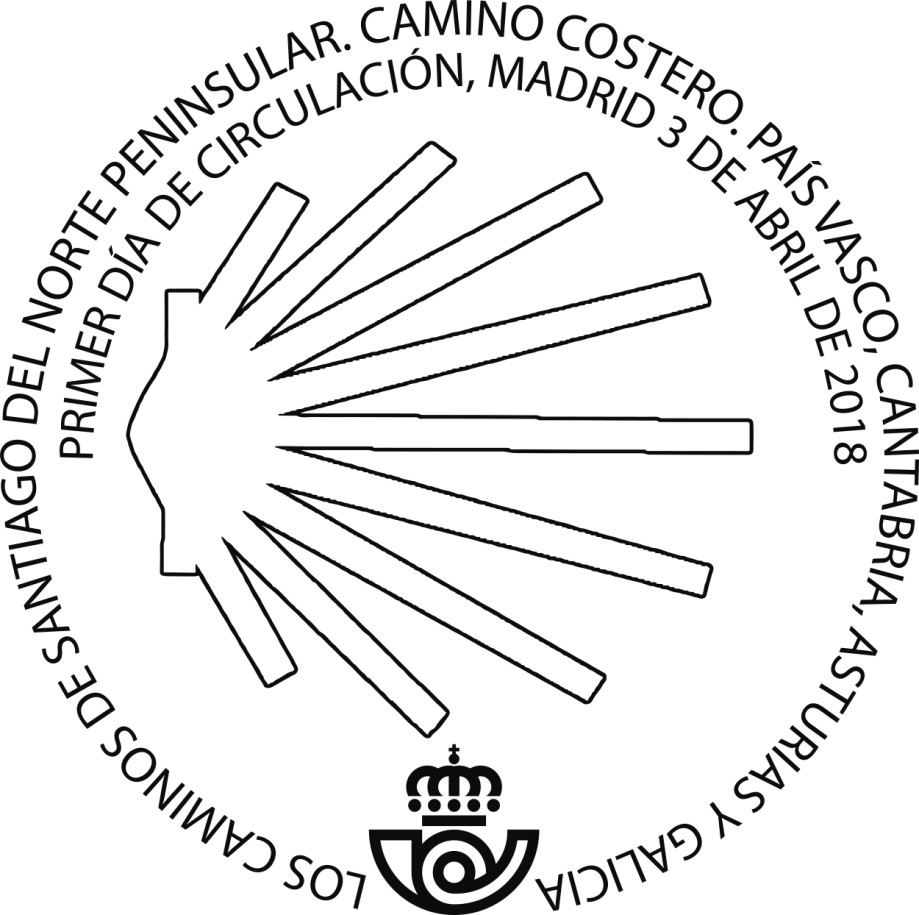
This is what Correos means when we say to walk the Camino del Norte stamp by stamp. But the charms of this Route through the north of the Iberian Peninsula are endless. Its coasts, its valleys, its monuments, even its most difficult sections, provide the pilgrim with a unique experience. To find out more about the route’s sections as well as what to see and do during the pilgrimage, check out these tips from our postmen and women on the section of our website dedicated to the Northern Way.
Should you finally decide to undertake the adventure of the Camino del Norte, we remind you that from this year that our daily rucksack transfer service - the Paq Mochila - is available from Irún to Santiago. Enjoy and ¡buen camino!
Your email address will not be published.
Mandatory fields are marked with *




